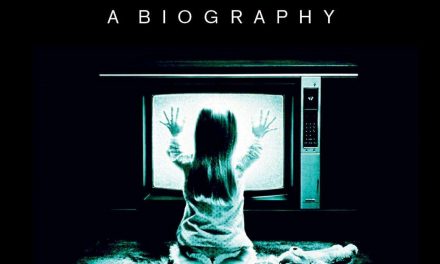While generally marketed as the further adventures of a popular character, spin-offs generally have the industrial function of creating more saleable content for a given studio and/or network. Such is the case with Beyond Paradise (from now BP, BBC 2023-) a spin-off of venerable popular series Death in Paradise (from now DIP, BBC 2011-) which sees DI Humphrey Goodman (Kris Marshall, in DIP 3.1-6.6) and his now-fiancee’ Martha (Sally Bretton, in DIP from 5.8, 6.1, 6.3-6.4, 6.6) relocated to her hometown of ‘Shipton Abbott’ in Devon (mostly filmed in Looe, Cornwall). I’ve written blogs recently about the use of fictitious places in media but here I’m more interested in exploring how BP recontextualises and expresses many of the same problems in representation that its parent series does.
For those unfamiliar with either series, DIP follows a series of British (and, in one case, London Irish) detectives who are seconded to the fictional Caribbean island of ‘Saint-Marie.’[1] The always white, heterosexual male detective is put in charge of– and, especially in early series, is continually praised and admired as a genius by– a Black police force on a majority-Black island which also has a French minority population (it’s an Anglo-French co-production). If you are already wincing at the potential for colonialist discourses, I addressed them in part last year (Beattie 2022); suffice to say here that the series does have a tendency to laud the white British man and insist that they cannot solve crimes (and, by extension, preserve the rule of law) without him. The series is also problematic with its representation of gender, which I shall discuss below, and in short follows Turnbull (2010) who notes that crime dramas can, though do not have to, often express and reinforce conservative perspectives.
Moving to BP, it would seem that many of the same issues that plague DIP still exist, though in this case they are mostly, mercifully, divested from colonialism and subalternity. BP is very much in the perceived-British ‘cosy mystery’ genre (Matzke and Mühleisen 2006) and the removal of the term ‘death’ in the title means that DI Goodman and his small Devonian team can investigate a wider variety of crimes. The team include DS Esther Williams (Zahra Ahmadi), PC Kelby Hartford (Dylan Llewellyn) and their civilian aid Margo Martins (Felicity Montagu). While they are not as effusive in their praise as occurred on DIP, as Goodman is still always the person to solve the crime and explain it to the audience, we now have a white, male big-city/London police officer coming to a small town in Devon who is in charge of law and order. Though one can argue that Ahmadi being of Persian descent brings in aspects of race and subalternity, much like in the parent series race is ignored. Shipton Abbott is an eccentric small town, much like the small island of Saint-Marie, with hapless young PCs and locals who are strongly interconnected. The general removal of visible BIPOC characters by comparison with DIP, however, illustrates the gender representation problems within both series.
https://youtube.com/watch?v=ODkrQwbVNdA
Until series 11, the detective sergeants in DIP were always Black Frenchwomen. More importantly, at various points two of the three, DS Camille Bordey (Sara Martins) and DS Florence Cassell (Josephine Jobert), were positioned as love interests for at least one if not two DIs. Bar-owner and eventual mayor Catherine Bordey (Elizabeth Bourgine) was initially positioned primarily as Camille’s mother and remains a maternal figure on the parent series at the time of writing. Though women regulars on DIP have begun moving on from these types of roles, they are still constantly portrayed as looking up to and/or being unfailingly loyal to the white male DI. Unfortunately, this earlier portrayal seems to be what BP is emulating. Women characters, regular and recurring, are generally positioned as love interests and/or mothers. Williams is a parent, Margo is a maternal figure, a love interest to a suspect in 1.2 and has an alluded-to extensive romantic history. Martha’s mother, Anne (Barbara Flynn) is a series regular, and Martha’s main storylines position her as either Goodman’s fiancee’ or a would-be mother having difficulty conceiving. Though she has started her own restaurant, this plotline is a thin excuse to put her back into contact with her ex-fiance Archie (Jamie Bamber) which, again, positions her as a love interest and/or point of contention between Goodman and Archie. When Martha leaves Goodman, she is presented as being in the wrong, which he has to ‘explain’ to her to get them back together in 1.6). Even the Chief Superintendent (Jade Harrison) is the object of Hartford’s crush as well as being the bane of Goodman’s existence rather than a developed character in her own right. While six episodes is not enough for extensive characterisation of secondary characters, that the majority of women are positioned in relation to either men or motherhood is very much in keeping with Turnbull’s (2010) contention that many crime dramas espouse conservative values. When analysing crime dramas in the context of Dyer’s interpretation of ‘entertainment,’ Turnbull (2010) argues that, in such texts
community is represented by the moral order which the crime disrupts and which is restored at the conclusion when, conventionally but not always, the criminals are apprehended and/or closure is obtained (Ibid: 822).
Turnbull (Ibid) goes on to argue that it is just as valid to think of crime dramas as dystopian, rather than Dyer’s utopian view of entertainment. That said, BP does not engage in or with dystopic representations; the male lead ‘gets’ the female lead, every episode ends with the culprit caught, and there is little to no interrogation of sociocultural norms beyond the most superficial (i.e., sexual assault is bad and should be taken into account if a victim perpetrates a subsequent crime in 1.5). Thus the ‘moral order’ is strongly heteronormative,[2] under the control of the white, male, big-city/London detective and represented within the context of these conservative values as relating to gender.
This idea of gender representation in crime fiction is further discussed in Hoffman (2016) in her book on gender in ‘Golden Age’ detective fiction. She notes that
representations of gender in women’s golden age crime fiction are rarely stable and are often fraught with contradictions. …independence and nonconformity are often contained by the safety of conventionally heteronormative conclusions. However, despite the conservative resolutions many of these narratives provide, they still contain disruptive potential. […] Bodies, particularly women’s bodies…represent sites of social and sexual deviance that must be resolved—buried—at the narrative’s end so that order can be restored, however superficially (Ibid: 157).
Tension and ambiguity– the ‘disruptive potential,’ Hoffman discusses in the above quote– seem to be absent from BP, however.
I would argue that one reason for such flattened representation can be found as part of Conway’s (2013) concept of the paradox of saleable diversity. He argues that the need to create saleable product limits the possibilities for characterisation, particularly with regard to the characters’ emotional expression. At the same time, this commercial need causes a focus on either similarity and/or difference between groups. The focus on more conservative perspectives, particularly regarding female characters, can be read in this way. The narrative interest lies with the lead character, Goodman, and his relationships with his fiancée and with the new people he meets– and, because this is a spin-off, it inherently causes a focus on both similarities and differences between Shipton Abbott and Saint-Marie. This elides (arguably erases) the expressed melange Caribbean culture of Saint-Marie (itself an elision, see Beattie 2022) through a focus on similarities between the majority-white English Devon and the majority-Black postcolonial island. Differences in BP tend to be confined to Goodman’s big-city/’genius’ and his problems, with the new characters functioning as plot devices to advance that story as well as to promote or prioritise the extension of London into the regions. We can perhaps see this as something akin to ‘saleable regionalisation,’ in which small-town Devon (really Cornwall) is flattened into a recognisable, palatable representation which does not challenge or discomfit the audience.[3]
When coupled with the series’ small-town setting, these seemingly conservative gender representations also can be translated onto ‘Shipton Abbott’ and places perceived to be like it. Rus et urbs (‘the country and the city’) is a common enough juxtaposition and the idea of the rural idyll being compromised or covering over crime and other threats is a staple of many crime drama subgenres.[4] Turnbull (2010: 825) argues that crime drama plots ‘provid[e] a mechanism for the discovery of both people and place,’ thus linking both the setting and its residents in the context of the narrative and its reception. Here, however, the connection between conservative ‘values’ and the small-town setting can be read as making the region appear ‘backward’ and in need of a big-city detective to solve all the problems. Given the BBC’s mixed results with regard to regionalisation (e.g. Blandford and Lacey 2011, inter multa alia) this does an almost-certainly-unintentional disservice to yet another non-London region in the name of more, and more saleable, content.
Dr Melissa Beattie is a recovering Classicist who was awarded a PhD in Theatre, Film and TV Studies from Aberystwyth University where she studied Torchwood and national identity through fan/audience research as well as textual analysis. She has published and presented several papers relating to transnational television, audience research and/or national identity. She is currently an Assistant Professor of Communication (Ambassador’s Distinguished Scholars Programme Fellow) at Bahir Dar University in Ethiopia and will be joining the American University of Phnom Penh in August 2023 as an Assistant Professor of English/Humanities. She has previously worked at universities in the US, Korea, Pakistan and Armenia. She can be contacted at tritogeneia@aol.com.
Footnotes
[1] Yes, I realise the correct French would be ‘Sainte.’ ‘Saint’ is how it’s spelt in the series.
[2] A lesbian couple appear in 1.6 as criminals (burglary) of one of the couple’s ex-girlfriends.
[3] Conway argues much the same with regard to Little Mosque on the Prairie (CBC 2007-2012) and its portrayal of Muslims.
[4] It is also a staple of folk horror.
Works cited
Beattie M (2022) ‘You can get it if you really want?’: The use of Caribbean music genres in Death in Paradise. Journal of Popular Television. 10(3): 231–46
Blandford S and Lacey S (2011) Screening Wales: Portrayal, representation and identity: A case study. Critical Studies in Television. 6(2): 1-12.
Conway K (2013) Little Mosque on the Prairie and the Paradoxes of Cultural Translation. Toronto: University of Toronto Press.
Hoffman M (2016) Gender and Representation in British ‘Golden Age’ Crime Fiction: Women Writing Women. Houndmills: Palgrave MacMillan.
Matzke C and Mühleisen S (2006) Postcolonial postmortems: Issues and perspectives. In Matzke C and Mühleisen S (eds.) Postcolonial Postmortems: Crime Fiction from a Transcultural Perspective, Amsterdam: Rodopi, pp. 1-16.
McElroy R (2011) ‘Putting the landmark back into television:’ Producing place and cultural value in Cardiff. Place Branding and Public Diplomacy. 7(3): 175–184.
Turnbull S (2010), ‘Crime as entertainment: The case of the TV crime drama’, Continuum: Journal of Media & Cultural Studies. 24(6): 819–27.





